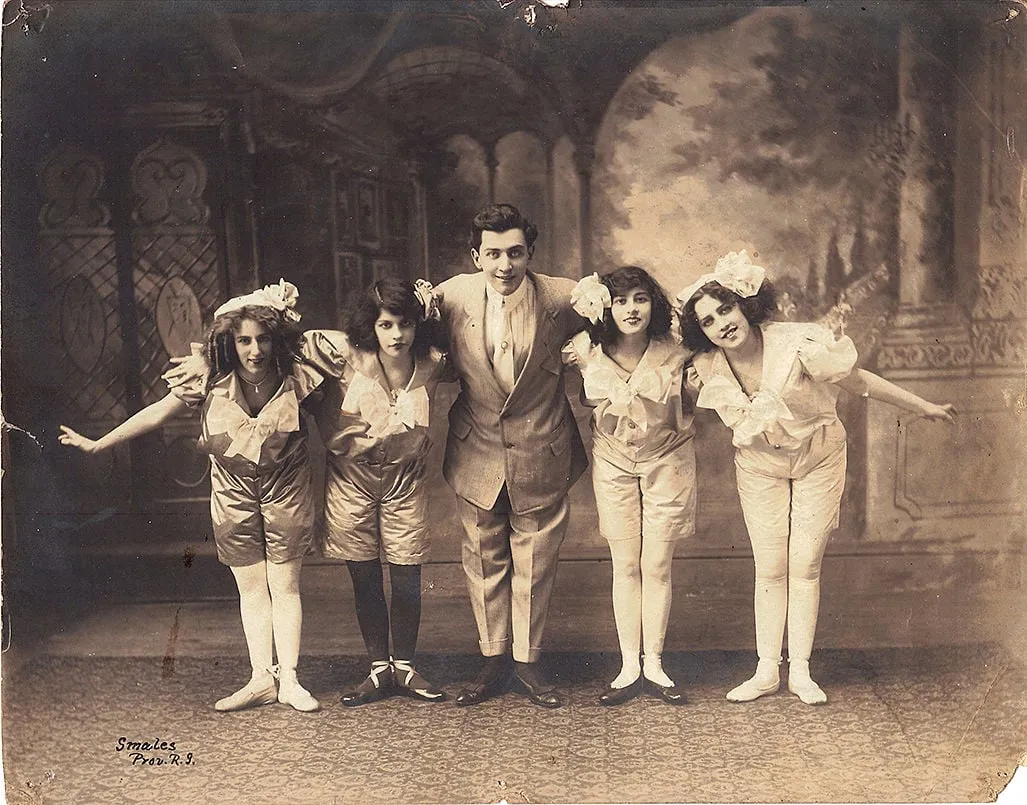
Vaudeville was a popular form of variety entertainment in the United States and Canada from the late 19th century to the early 1930s. It consisted of a series of unrelated acts, typically lasting 10 to 15 minutes each, featuring a wide variety of performers, such as comedians, magicians, acrobats, singers, dancers, and animal acts.
Vaudeville was a relatively inexpensive form of entertainment, and it was enjoyed by people of all ages and social classes. It was particularly popular in working-class neighborhoods, where it was seen as a way to escape the drudgery of everyday life.
Vaudeville shows were typically held in large theaters, and they often played to capacity crowds. The performers were paid a relatively small amount of money per performance, but they could make a very good living if they were successful.
Vaudeville was a major stepping stone for many famous performers, including Charlie Chaplin, Buster Keaton, Will Rogers, and George Burns. It was also a popular venue for introducing new acts to the public, and many of today's most popular comedians and singers got their start in vaudeville.
Vaudeville began to decline in popularity in the 1920s, as people began to turn to other forms of entertainment, such as radio and movies. The final blow came in the 1930s, with the Great Depression, which forced many vaudeville theaters to close.
Vaudeville had a profound influence on American popular culture, and its legacy can still be seen in many forms of entertainment today.
History
Vaudeville was a form of theatrical entertainment that originated in France in the 18th century and became popular in the United States in the late 19th century. It was a variety show that featured a wide range of acts.
The word "vaudeville" is thought to be derived from the French phrase "voix de ville," which means "voice of the city." The first vaudeville performances in the United States were held in concert saloons and variety halls in the 1860s. These early shows were often rowdy and bawdy, and they attracted a mostly male audience.
In the 1870s and 1880s, vaudeville began to evolve into a more family-friendly form of entertainment. This was due in part to the efforts of Tony Pastor, a New York City theater owner who is credited with establishing the "polite vaudeville" format. Pastor's shows featured a variety of acts that were appropriate for all ages, and they were very popular with families.
By the early 1900s, vaudeville was at its peak of popularity. There were vaudeville theaters in every major city in the United States, and the shows were a major source of entertainment for millions of people.
Vaudeville began to decline in popularity in the 1920s, as people began to turn to other forms of entertainment, such as radio and movies. The final blow came in the 1930s, with the Great Depression, which forced many vaudeville theaters to close.
Despite its decline, vaudeville had a profound influence on American popular culture. Its legacy can still be seen in many forms of entertainment today, such as variety shows, stand-up comedy, and musicals.
Reasons for Decline
Several factors contributed to the decline and end of vaudeville in the early 20th century.
- The rise of motion pictures:
Vaudeville's decline coincided with the rise of motion pictures, which offered a more immersive and affordable form of entertainment. As film technology advanced and talkies were introduced in the late 1920s, audiences were drawn to the novelty and convenience of movies, which could tell compelling stories with elaborate sets and costumes.
- The Great Depression:
The economic hardships of the Great Depression hit vaudeville theaters hard. Audiences, struggling financially, had to prioritize their spending, and entertainment became a luxury they could no longer afford. Theater attendance plummeted, and many vaudeville houses were forced to close.
- Changing tastes and preferences:
Vaudeville's appeal began to fade as audiences' tastes and preferences changed. The variety show format, with its rapid succession of unrelated acts, lost its charm compared to the more cohesive and engaging narratives offered by movies and radio programs.
- Lack of innovation:
Vaudeville failed to adapt to the changing entertainment landscape. The industry remained largely unchanged for decades, while other forms of entertainment evolved and embraced new technologies. Vaudeville's resistance to innovation made it increasingly outdated and less appealing to audiences.
By the mid-1930s, vaudeville was virtually extinct. The few remaining theaters struggled to survive, and the glory days of this once-popular form of entertainment were long gone. While its demise marked the end of an era, vaudeville's legacy lives on in various forms of entertainment, from stand-up comedy and variety shows to the influence it had on early filmmakers and comedians.